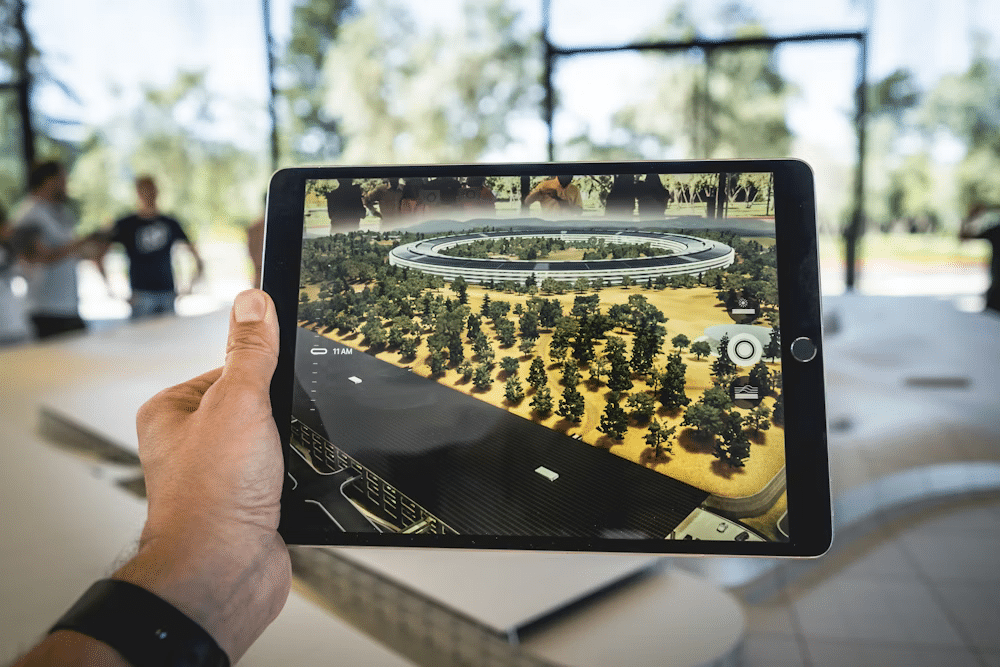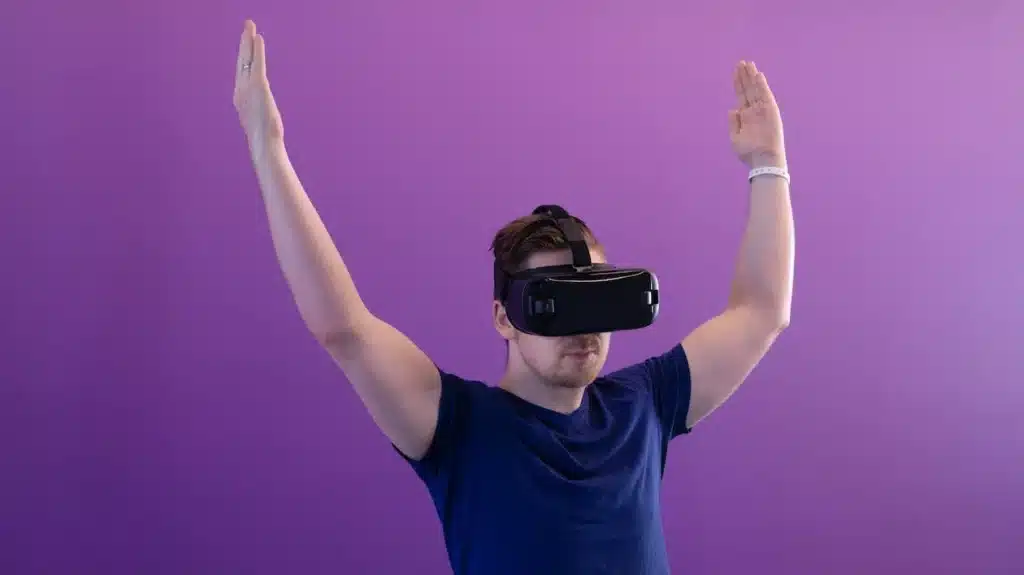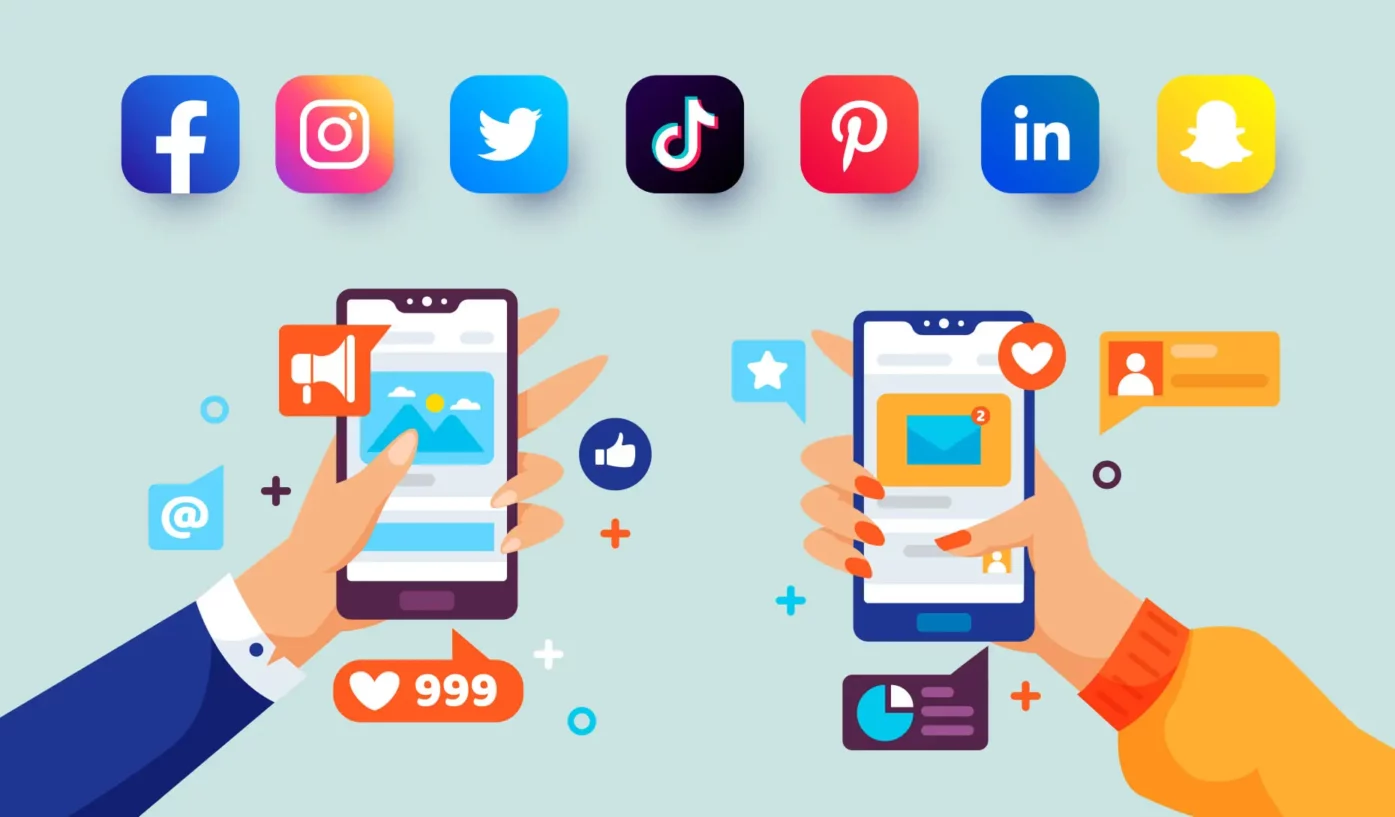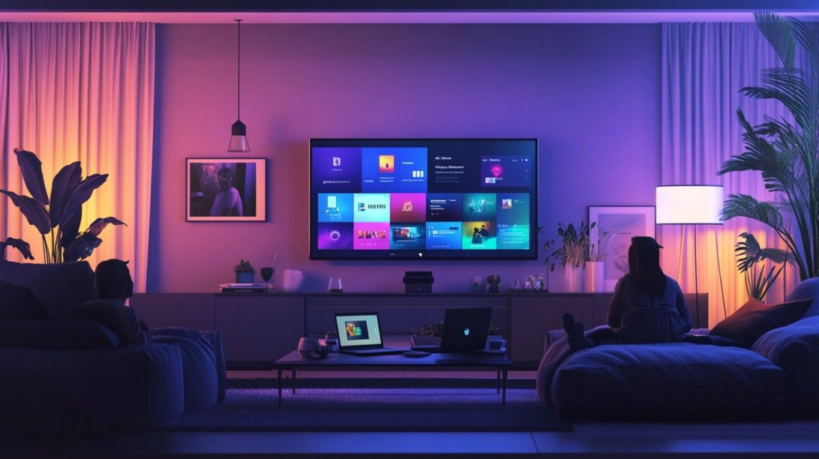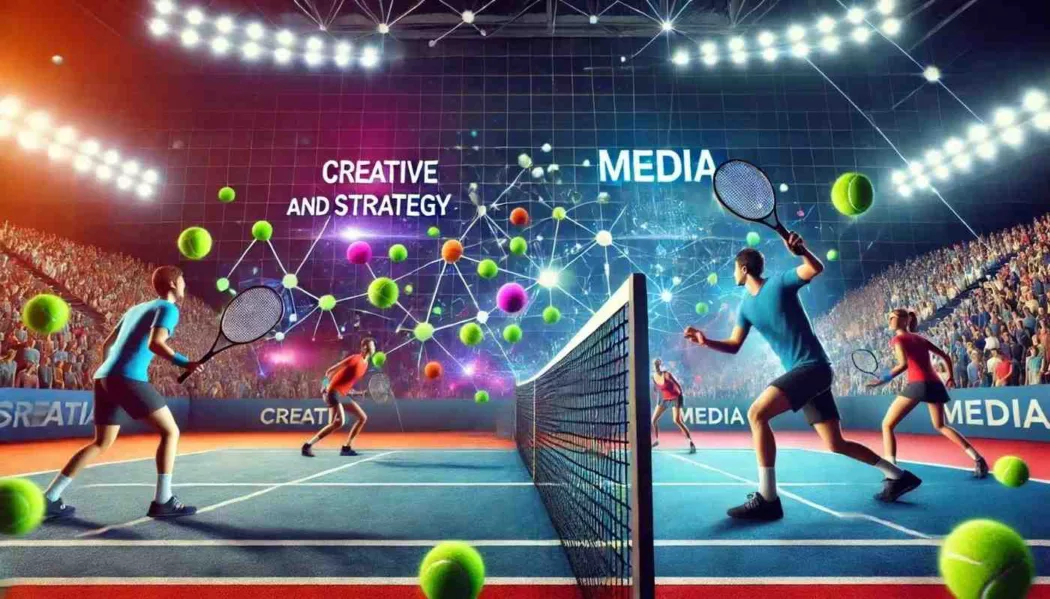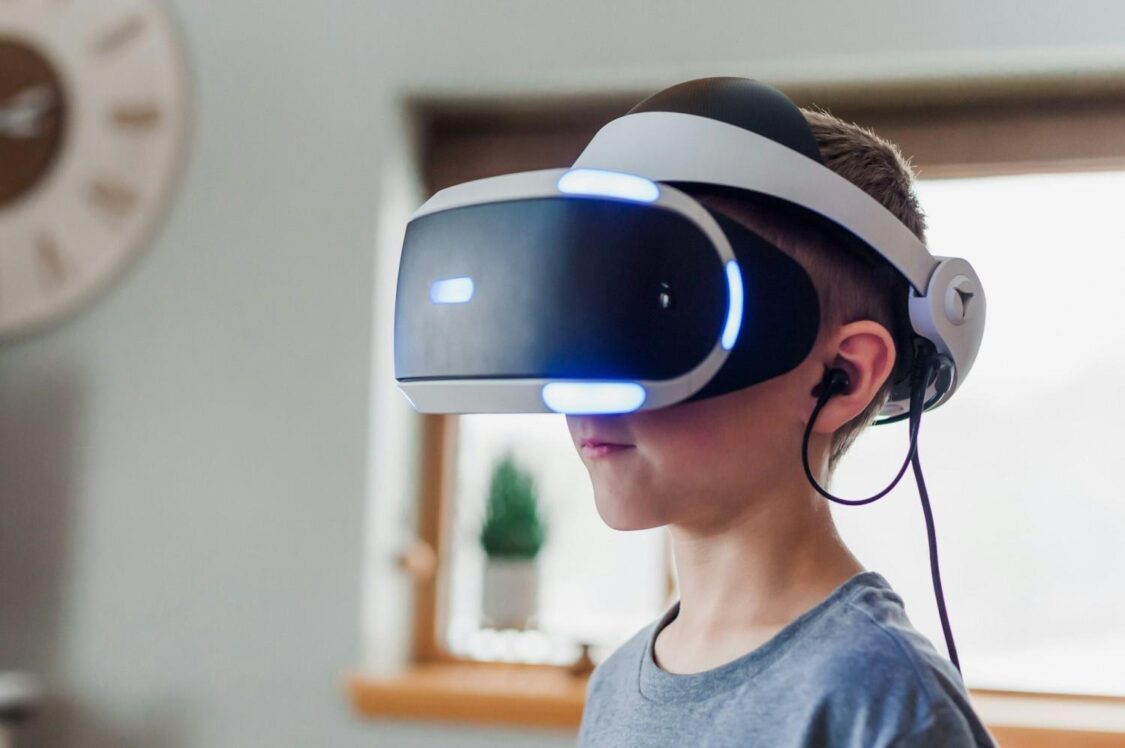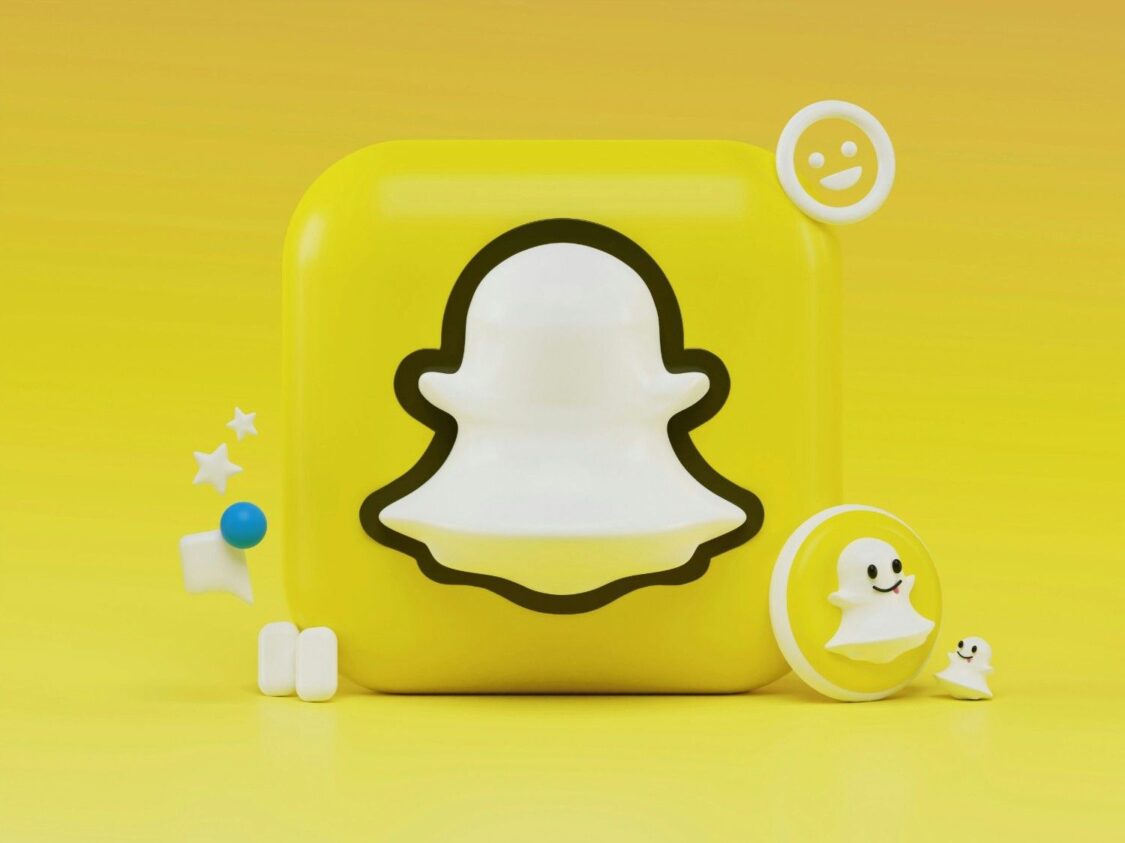Using Augmented Reality In Your Marketing Campaigns
27.01.2022Discover the impact of AR in marketing, from enhancing customer experience to shaping future trends. Dive into our guide for actionable insights.

Augmented reality (AR) is transforming the brand marketing landscape into a critical driver of innovation and customer engagement. 2023 marks a pivotal year where AR becomes integral to brand strategies, enhancing real-world experiences with digital innovation. Brands increasingly explore the metaverse, leveraging AR to unlock substantial business value and redefine customer interactions.
Understanding Augmented Reality (AR)
AR blends digital elements with the physical world, creating an immersive experience that reshapes consumer interactions. This technology is not confined to futuristic visions; it’s revolutionising how brands connect with their audience. AR market volume, as of 2023, is estimated to reach a staggering $11.58 billion, underscoring its rapid adoption and the growing interest from various sectors. The technology empowers consumers to visualise and customise products in 3D, offering a more engaging shopping experience.
The introduction of Web-based AR (WebAR) is particularly noteworthy. This technology enables consumers to access AR experiences through web browsers, bypassing the need to download apps. This advancement is significant for brands as it expands their reach to anyone with a smartphone, unlocking a vast pool of potential customers. Statistics show that mobile AR users are engaging with this technology at an impressive rate, with at least 54% of users engaging weekly and 75% monthly.
In retail, the adoption of WebAR is making the e-commerce experience more tangible and the physical store experience more digital. Brands can now allow customers to see how clothes look on them or how furniture fits in their space, enriching the online shopping experience. This integration of AR into e-commerce is expected to drive key metrics such as dwell time, click-through rates, and sales, aligning perfectly with the elevated consumer expectations of modern shopping experiences.
The augmented reality market is not just growing; it’s surging. With a projected market size of USD 62.75 billion in 2023, it’s clear that AR is becoming an indispensable tool in marketing, offering brands novel ways to engage, excite, and retain customers. The transformation by AR in retail, e-commerce, and brand interaction signifies a new era in marketing, where digital experiences are not just add-ons but essential components of the customer journey.
Advantages of AR in Digital Marketing
Enhanced Customer Experience
AR transforms customer experience, offering an intuitive and engaging way for consumers to interact with products using smartphones and tablets. Viewing products from all angles, including bulky items, enhances the shopping experience.
Creating a Buzz
AR is effective for creating virality, leveraging word of mouth and social sharing to attract new customers. It allows brands to stand out by offering unique experiences that competitors may not yet have.
Personalisation Opportunities
AR enables brands to create personalised experiences that are more engaging than standard media content, thereby resonating more profoundly with individual preferences.
Content Quality
AR provides tools for creating innovative content, differentiating brand offerings, and maintaining audience retention through interactivity.
Viral Content Generation
AR experiences can be shared easily on social media, promoting user-generated advertising and increasing brand visibility without additional budget.
AR Presentations and Metrics
AR can set brands apart at events like trade shows, providing unique experiences that turn visitors into clients. AR also offers additional metrics for understanding customer behavior and engagement.
Successful Campaign Examples
Brands like Coca-Cola, Shopify, Sephora, and Ikea have successfully implemented AR to enhance customer interaction and satisfaction, indicating AR’s growing relevance in the digital world.
Challenges and Limitations of AR in Marketing
Unfortunately, I wasn’t able to find specific information about the challenges and limitations of AR in marketing as of 2023. However, based on general knowledge, typical challenges in implementing AR in marketing include:
- High Development Costs: Creating high-quality AR content often requires significant technological and expertise investments.
- Technical Complexity: Developing AR experiences can be technically challenging, requiring specialised skills and resources.
- Device Compatibility: Ensuring AR experiences work seamlessly across different devices and platforms can be a hurdle.
- User Adoption: Convincing customers to engage with AR experiences can be challenging, especially if it requires downloading apps or additional steps.
- Privacy and Data Security: With AR collecting data on user interactions and behavior, ensuring user privacy and data security is a significant concern.
- Balancing Innovation with Accessibility: While innovating, brands must ensure that AR experiences are accessible and easy for a broad range of consumers.
Real-World Applications of AR in Marketing
AR is revolutionising the retail sector, one of the most significantly impacted by recent changes. Retailers now recreate entire product lines in 3D, transforming the shopping experience into something more accessible and entertaining.
Customers can view and interact with products from their smartphones, enjoying a comprehensive perspective. This approach includes virtually trying on items or seeing how they fit into actual rooms. Such experiences are immersive and shareable, enhancing the social aspect of shopping.
In viral content generation, businesses use AR to create engaging experiences easily shared on social media. This strategy boosts brand visibility as users become promoters, sharing their unique interactions with the brand’s AR content. The personalisation aspect of these experiences encourages users to contribute to online AR ad campaigns, effectively turning them into brand ambassadors.
Sephora
There’s a reason why many women avoid buying cosmetics online: you can’t tell if you’ll like the lip shade or foundation you’re interested in unless you try it on in person.
Sephora recognises this challenge and has developed the Virtual Artist App. This AR experience allows Sephora app users to see how cosmetic items appear on their faces using their phone’s camera. Users may also learn what tools and supplies to apply specific items.
Taco Bell
Taco Bell included an AR component on each Locos Tacos box and drink cup for their Doritos shell marketing. Users could see brand-related Twitter and Facebook content on their smartphones after scanning the box with the Taco Bell app.
Taco Bell also employed AR to foster a better sense of community by linking its consumers with live social media activity. They also promoted their company as a leader in innovation, especially in the fast-food market.
Netflix
Netflix created a set of AR/VR lenses on Snapchat to promote Stranger Things. Users may capture recordings of themselves strolling through one of the houses featured in the show while creatures known as Demigorgons erupt out of the walls.
In addition to this lens, Netflix has also used AR filters to market its programming, which is remarkably engaging for a mobile app.
AR for Enhanced Branding and Consumer Interaction
AR is not just transforming how products are marketed; it’s reshaping branding. Businesses are leveraging AR to make their branding materials more interactive. By adding AR elements to items like business cards and brochures, brands offer consumers richer experiences. This approach transforms traditional marketing materials into gateways for engaging digital content.
Brands are also employing AR to augment their in-store experiences. They’re using location-based WebAR experiences to drive foot traffic, turning physical shopping into a game-like experience. This strategy includes activations like in-store scavenger hunts, encouraging consumers to explore and discover new products more. These personalised, engaging experiences give consumers fresh reasons to visit brick-and-mortar stores, leading to increased business.
AR enhances the e-commerce experience in the digital realm, making it more tangible. Retail brands use WebAR to allow customers to see how different items look on them or fit into their living spaces. Adding this more physical element to online shopping gives customers a wealth of information, leading to higher sales and lower return rates. Integrating AR into e-commerce is becoming a standard expectation for consumers on their shopping journeys.
From enhancing retail experiences to revolutionising branding, AR in marketing has shown its potential to blend the digital and physical worlds creatively and effectively. This synergy offers consumers unique, memorable, and engaging experiences, setting new customer interaction and satisfaction standards.
The Future of AR in Marketing
Augmented reality’s future in marketing looks incredibly promising. Experts forecast the AR market will grow exponentially, potentially exceeding $50 billion by 2027. This growth signals a paradigm shift in how brands will interact with customers.
AR will become a fundamental part of the e-commerce experience, driven by consumer demand for more immersive shopping experiences. With AR, the customer journey from awareness to purchase becomes seamless, revolutionising the traditional purchasing funnel.
How to Get Started with AR in Your Marketing Campaigns
- Identify the Right Use Case: Start by pinpointing how AR can enhance your customer’s experience. Whether trying products virtually or enriching the in-store experience, your AR initiative should align with your brand’s goals.
- Partner with AR Developers: Collaborate with experts in AR technology to create immersive and engaging experiences for your customers.
- Test and Iterate: Launch a pilot AR campaign and gather feedback. Use this data to refine and improve the experience.
- Integrate with Existing Platforms: Ensure your AR experience is easily accessible, preferably through web-based platforms, to maximise reach.
- Educate Your Audience: Use your existing channels to educate customers about your new AR features and how to access them.
Conclusion
AR in marketing is more than a fleeting trend; it is a potent tool reshaping the consumer landscape. Brands that embrace this technology stand to gain a competitive edge, offering customers unique and memorable experiences. As we look to the future, AR’s role in marketing is set to expand, making it an essential element of digital strategy.
Ready to transform your brand with augmented reality? Reach out to us for a consultation and start your journey into the immersive world of AR marketing. Whether you’re looking to enhance customer engagement, boost sales, or create a buzz, AR provides the tools to take your marketing to the next level. Let’s innovate together and redefine the customer experience.



